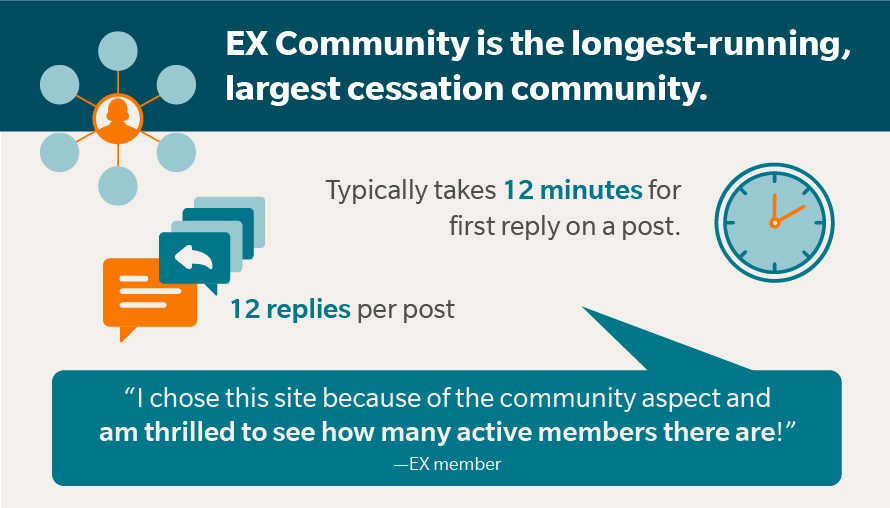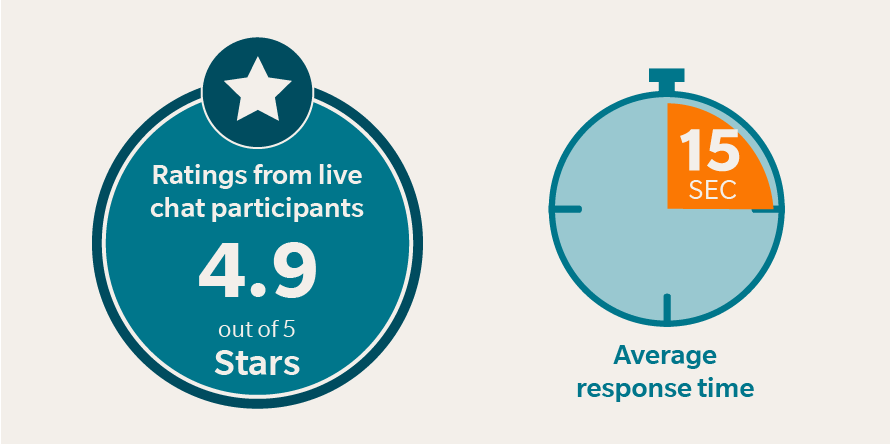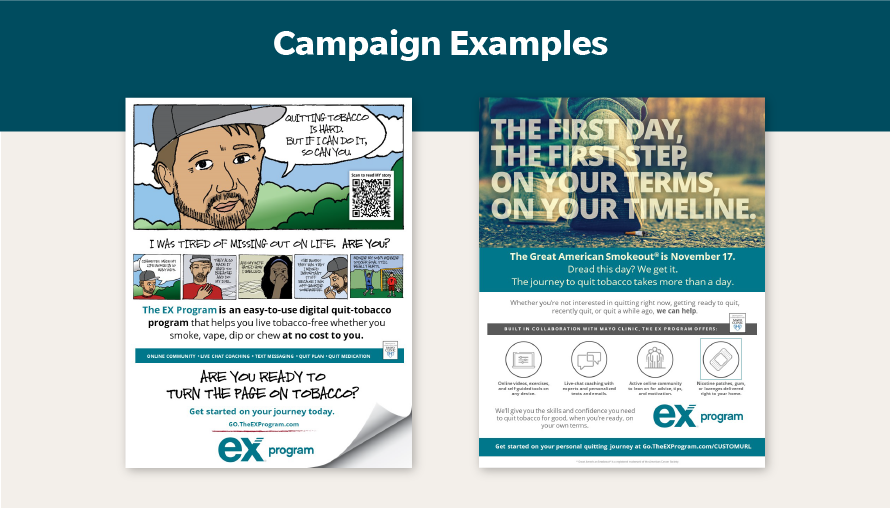Empathy can be powerful in any type of setting.
Defined as the capacity to understand or feel what another person is experiencing, communicating with empathy can be especially powerful with driving smoking cessation outcomes.
Unlike sympathy—which is similar but puts a degree of separation between people— empathy is about fostering connection in a way that’s non-judgmental and meaningful.
Using this approach for tobacco cessation is highly effective, in part because those who use tobacco often come into a cessation program feeling stigmatized with ample experience of stigma.
They’ve usually had experience with negativity and pejorative assessments, and that may have kept them from quitting in the past. Understandably, people who smoke don’t want to expose themselves to more judgment.
Providing an experience that’s suffused with empathy can give them the reassurance they need, helping them feel supported instead of scolded or judged. The EX Program uses empathy-based communication from the very start of a quitting journey, and maintains that approach throughout, to a successful quit and beyond.
Impact of Empathy on Smoking Cessation Outcomes
In the EX Program, main sources of empathy-driven support include:
- EX Community: Just a glance through the EX Community highlights how often members turn to each other for support—precisely when they need it the most. Questions or posts usually have replies within 12 minutes and can generate dozens of replies within just a few days.
The EX Community provides a strong example of how well-maintained, thoughtful, and respectful online communities can be a driving force for individual behavior change.
Research from Truth Initiative shows that people who smoke and are active in the EX Community are more than twice as likely to quit as those who did not join the community.
- Live Chat Coaching Interactions: Our live chat EX Coaches are well-versed in the links between tobacco use and mental health. They are also skilled in helping individuals navigate the stress and anxiety of quitting tobacco and knowing when to refer participants to mental health resources.
The coaching element of the EX Program uses evidence-based approaches such as motivational interviewing, goal setting, and education. Also, the EX Program collects post-chat survey responses to make sure that coaching interactions are hitting the mark and connecting meaningfully with participants.
- Search Engine Queries: We keep our finger on the pulse of what tobacco users are worried about, what novel products they use, and how they talk about different topics related to quitting by monitoring search traffic to our site. We then develop content that reflects those words, emotions, and product tailoring back to them.
Examples of content we’ve created based on search include:
– Why does my brain feel foggy after I quit vaping?
– Why am I so congested after quitting smoking?
– Why do I feel tightness in my chest now that I’ve quit?
- Meaningful Campaigns: Assets like flyers, social media posts, direct mail postcards, emails, and even website banners can contain empathy-based communication that drives uptake and engagement. For example, in a campaign for people who smoke with low literacy levels, we communicate through an easy-to-read comic that we understand the journey of quitting. Likewise, in promotions for one-day events like the Great American Smokeout, we show empathy that we know quitting doesn’t just take 1 day.
Each of these elements within the program are founded on empathy, making all types of people who use tobacco feel truly seen, heard, and understood. This value can give tobacco users the sense of confidence and support they need to try to quit.
There is great power in using tobacco users’ own words, struggles, insights, and interests to engage tobacco users — those willing and wanting to quit and those who are unwilling or unsure if they want to quit. Empathy-based communication leads to myriad outcomes on EX Program: improved program uptake, deeper program engagement, and ultimately, better quitting outcomes compared to quit-tobacco programs without our depth of experience.
See more about how the EX Program works to engage people who use tobacco in quitting and staying quit by visiting our Program page.







